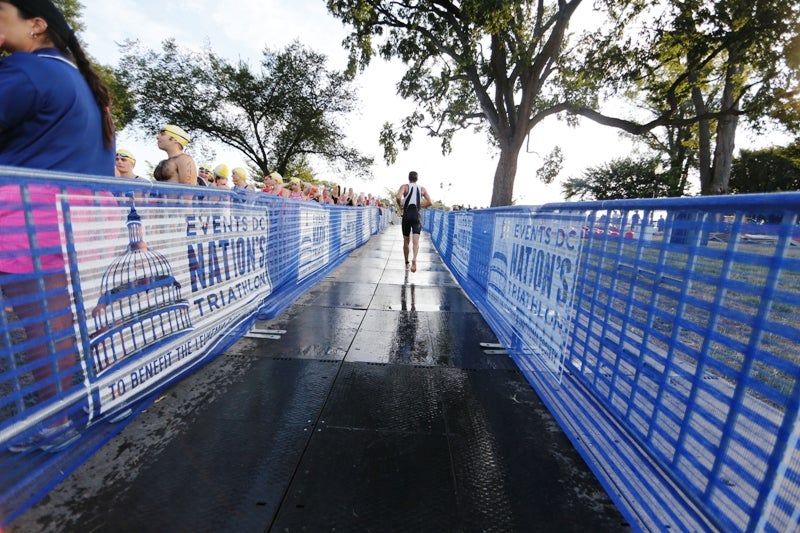Plan A Fun And Successful 2018 Season

The 2013 Events DC Nation's Triathlon. Photo: Dan Hicok
Break out the calendar and get ready for an exciting 2017 season.
There is a time of year for training and a time for playing. Ideally, you’ll soon be wrapping up an adventurous and rejuvenating play season during which you shunned written training schedules, and your workouts were deemed successful based on sheer fun versus time spent at lactate threshold.
Training season is almost here, soon to be followed by racing, so now is a great time to get out your calendar and make a proactive plan for several rewarding months of triathlon fun.
Choosing your races
Begin by selecting one or two “A” races, which require a full taper, peak and recovery period—up to a full month in total. Register and commit the money, then write them in ink on your calendar. I suggest prioritizing a date that allows enough lead-up time with good weather in order to be well prepared with minimal anxiety. Also, be sure there are no major work projects or family obligations in the month or two leading up to an “A” race.
Add in two to four “B” races, which may be shorter, less expensive or closer to home. Plan on a shorter taper leading to the race (as little as a few days), but be sure to recover from the race thoroughly before resuming full intensity training.
A “C” race may be done in place of a scheduled hard workout, and therefore will not have any taper at all, aka “training through” the race. C races can often provide an even better training stimulus than a solo workout given the competitive environment, so sprinkle in as many of these as you like and can afford. Expand your C race schedule by including single-sport events like 5Ks, swim meets or bike races (hill climbs or time trials are best for triathletes). If cycling is your weakness, use your train-through races as an opportunity to test your bike fitness. Set ambitious goals for your bike portion and treat the run as an easy training day.
Plan a week-long break: If your race schedule permits, try to break up your season into two halves separated by a week of play time. You’ll approach the second half with a refreshed body and mind, and likely nail the training necessary for a peak performance at your final A race.
RELATED: 5 Tips For Planning A Family-Friendly Race Season
Plot your training
Most triathletes periodize their training by focusing on different types of workouts at different phases of the season. But not all periodization is the same. Structure your training based on your race distance.
Short course
A traditional pyramid-style periodization strategy may be the best approach if your A race is a sprint- or Olympic-distance event. Begin with a long block of base prep, then gradually sharpen by adding progressively higher intensity workouts to your schedule. Start with aerobic conditioning then incorporate anaerobic/ lactate threshold work, and perhaps VO2max sessions before peaking for their big race.
RELATED – Macca’s Musings: The Distance Debate
Long distance
If you plan to peak for a 70.3 or full Ironman, you may be better off using an hourglass-shaped approach. Begin with a solid period of base prep in order to develop aerobically, strengthen connective tissue, and enhance muscular endurance. Then, enter the slender center of the hourglass by enjoying a month or two filled with short and spicy training and racing that will lift threshold and VO2 speeds while improving efficiency and economy. Then, with about two months to go before your final A race, ideally just after your mid-season break, lengthen your key training sessions to match the specific demands of your goal race. Aim to simulate race pace and intensity, which is best done using objective training measures such as heart rate and/or power.